 Abraham Lincoln
If given the truth, the people can be depended upon to meet any national crisis...
Abraham Lincoln
If given the truth, the people can be depended upon to meet any national crisis...
 Guildford news...
for Guildford people, brought to you by Guildford reporters - Guildford's own news service
Guildford news...
for Guildford people, brought to you by Guildford reporters - Guildford's own news service
New Rural Economic Strategy Focuses On Housing, Enterprise, Environment, Infrastructure and Land Management
Published on: 1 Aug, 2017
Updated on: 1 Aug, 2017
It is a beautiful summer’s day. Cows are grazing in a field that features a handsome oak tree, while a group of Victorian farm buildings have been refurbished and are available to hire for meetings or for dining in.

Pictured from left: Guildford Borough Council’s rural economies officer Chris Stanton; Bill Biddell of the Hampton Estate; and Guildford Borough Councillor Richard Billington, lead councillor for rural economy, countryside, park and leisure.
This is the 2,250-acre Hampton Estate at Seale in the borough of Guildford, managed and run by Bill and Bridget Biddell. As its website states, it “thrives on its rural diversity yet retains its beauty and original agricultural purpose.”
It is, of course, one of many rural enterprises in the borough of Guildford. These and the local countryside’s land use are the focus of the council’s new Rural Economic Strategy (2017-2022) that has just been published.
Ahead of a meeting at the Hampton Estate of the Guildford Business Forum Rural Group, The Guildford Dragon NEWS had the opportunity to speak to Bill Biddell, and also the council’s rural economy officer Chris Stanton, and Cllr Richard Billington, lead councillor for rural economy, countryside, parks and leisure, about the new strategy.
The council views the borough’s rural economy as important and wished to understand more about it and how a balance can be struck between it and the built-up areas of the borough.
It commissioned a survey to look at business needs in the borough’s rural areas and among the findings were concerns about the impact Brexit may have.
Cllr Billington said the council seemed to him more “town centered”, therefore he wished to find out the issues of people working in the local countryside. He cited that farming can be a lonely business and has found that people want to feel valued for the work they do.
Nationally there are fewer people working on the land these days and it has been estimated that the total equates to one person per thousand acres. Such lone working has its issues, particularly health and safety concerns when a person is working complicated machinery on their own.
Cllr Billington added that there is also often a good deal of financial pressure on famers who take on a family business.
So what is the purpose of the new strategy and who is it aimed at?
The three agreed that education is key as there are many who do not understand how the countryside in the borough actually operates.
Cllr Billington said that old and young people say affordable housing is a big problem in rural areas and that the need for it can be masked by the wealthy who live in the country. Chris Stanton added that there are young people who want to work in the rural areas where they grew up, so while homes need to be built there, that does not mean large estates.
Bill Biddell said that the new strategy “gives a record of where we are” and that it is a useful document, one that will also help those villages and communities looking at adopting their own Neighbourhood Plan.
He added it will help organisations such as the National Farmers’ Union and the Campaign To Protect Rural England to work together and that it will “get groups like that something to get their teeth into, and shows Guildford is a rural borough”.
Cllr Billington said that many may ask ‘what will the strategy do for me?’ Acknowledging that it may not do much straight away, he said it will help to provide a solid foundation on which to build a strong rural economy, with the council ensuring that it engages with young people to development the future direction of the strategy.
Bill Biddell added: “Surrey is a go-ahead county. Guildford is recognised for its retail side and the rural economy can work together with it so there is success here and the landscape can also be enjoyed.”
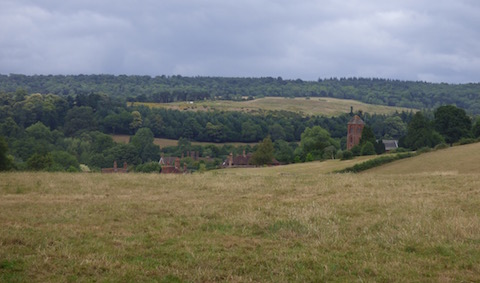
A view across field at Albury. Analysis published in the new Rural Economic Strategy notes many factors including one of the strengths being an outstanding and diverse natural landscape. A weakness being increasing traffic accessing public countryside. One of the opportunities are Local Neighbourhood Plans. And one of the threats is UK-EU Single Market protections fail post-Brexit.
The strategy has five core priorities:
- Affordable housing and sustainable communities
- Infrastructure for enterprise
- Landscape management and countryside vision
- Green space, health and wellbeing for better quality of life
- Energy policy, generation and supply
Launching the strategy, Guildford Borough Council says there is a thriving rural economy here, and that it provides a harmonious balance between beautiful natural resources, innovative businesses, enterprise and leisure.
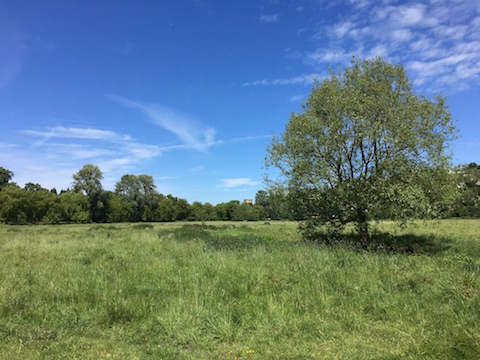
Shalford water meadows looking towards Guildford with the castle just visible. Picture from the Rural Economic Strategy document.
In the foreword to the strategy document, the council leader Paul Spooner, writes: “The purpose of the Rural Economic Strategy is to support delivery of more affordable housing, employment, superfast broadband and other necessary infrastructure whilst preserving Guildford’s special landscapes and environmental qualities.”
The five-year strategy covers the River Wey catchment area and also includes the neighbouring boroughs of Waverley and Woking within that area.
A PDF copy of the strategy can be downloaded from the council’s website.
Responses to New Rural Economic Strategy Focuses On Housing, Enterprise, Environment, Infrastructure and Land Management
Leave a Comment Cancel replyPlease see our comments policy. All comments are moderated and may take time to appear.
Recent Articles
- City Impress to Win and Progress to Next Round of the FA Vase
- Refurbishment Work Continues at the Yvonne Arnaud While Theatre Re-opens
- Highways Bulletin for September 23
- SEND Child Misses Two Years of Education
- Letter: Will E-Bike Prices Put People Off?
- Correction: Warrant Was Issued for Arrest of HRA Investigation Suspect
- Guildford Lions Club Announces 2024 Firework Fiesta
- Deserved 1-0 Win for City in Home FA Vase Tie
- Notice: The Library of Things
- Letter: Has the Sinner At Last Repented?


Recent Comments
- John Lomas on Letter: Will E-Bike Prices Put People Off?
- Olly Azad on Letter: The Town Must Present a Strong, United Voice on Building Heights
- Olly Azad on Deserved 1-0 Win for City in Home FA Vase Tie
- David Roberts on Strip Cartoon Tells Story of Monmouth Rebellion and its Guildford Links
- Roland Dunster on E-Bikes for Hire Arrive in Guildford
- Nigel Keane on Letter: The Town Must Present a Strong, United Voice on Building Heights
Search in Site
Media Gallery
Dragon Interview: Local Artist Leaves Her Mark At One of England’s Most Historic Buildings
January 21, 2023 / No Comment / Read MoreDragon Interview: Lib Dem Planning Chair: ‘Current Policy Doesn’t Work for Local People’
January 19, 2023 / No Comment / Read MoreA3 Tunnel in Guildford ‘Necessary’ for New Homes, Says Guildford’s MP
January 10, 2023 / No Comment / Read More‘Madness’ for London Road Scheme to Go Ahead Against ‘Huge Opposition’, Says SCC Leader
January 6, 2023 / No Comment / Read MoreCouncillor’s Son Starts Campaign for More Consultation on North Street Plan
December 30, 2022 / No Comment / Read MoreCounty Council Climbs Down Over London Road Works – Further ‘Engagement’ Period Announced
December 14, 2022 / No Comment / Read MoreDragon Interview: GBC Reaction to the Government’s Expected Decision to Relax Housing Targets
December 7, 2022 / No Comment / Read MoreHow Can Our Town Centre Businesses Recover? Watch the Shop Front Debate
May 18, 2020 / No Comment / Read More



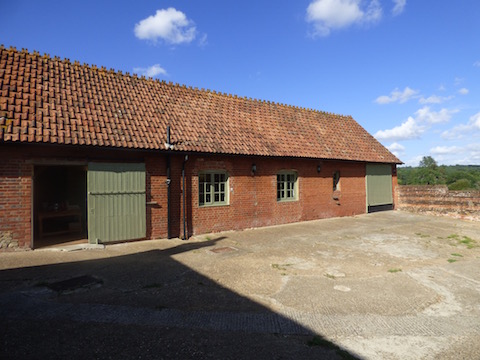
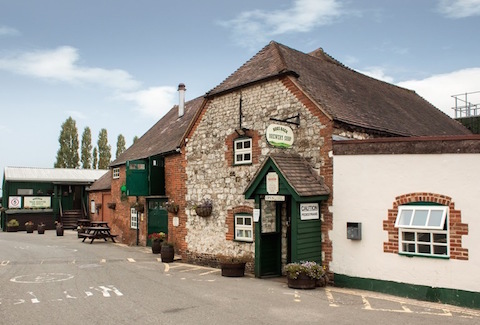



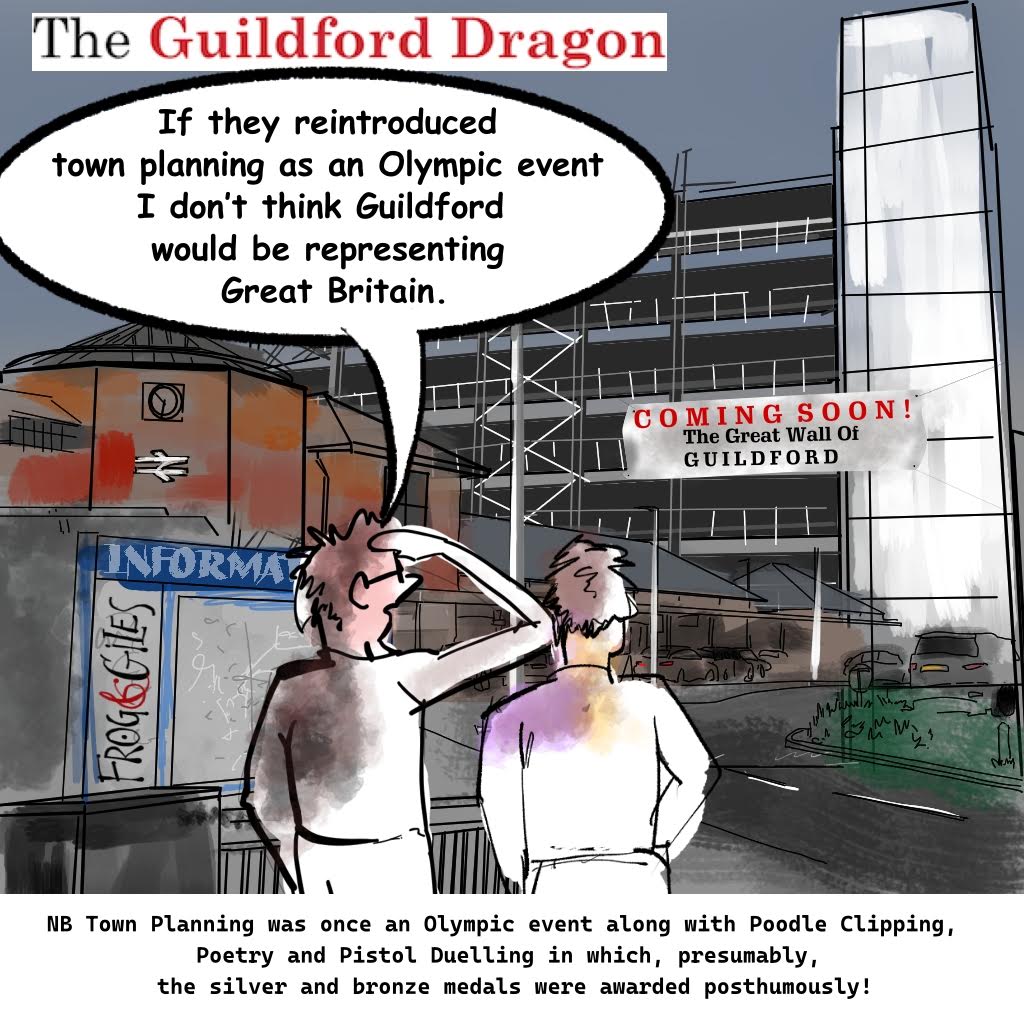



Mike Murphy
August 2, 2017 at 10:13 pm
Typical of Cllr Spooner to advocate a brilliant rural initiative and then proceed with his dreadful Local Plan that builds all over our precious farming green belt.
As usual Total double standards and hypocrisy.
Gordon Bridger
August 4, 2017 at 10:27 am
Seems a pretty sound strategy to me – congratulations Richard Billington and team.
It’s the town strategy which worries me – lacks cohesion, and omitting the massive North Street development in the Local Plan makes it seriously questionable. Retail world wide is now going through a revolution and many big malls worldwide, according to the press, are under threat.
It would be a good time to revise the idea of trying to turn the centre of Guildford into the largest shopping centre in the South-East and reshape it into a much-needed housing development.
John Perkins
August 5, 2017 at 7:34 am
I completely agree with the suggestion that the centre of town should be developed not for retail, but as housing. Does anyone have an idea of how many houses and low-rise flats could be created there?
Residents would have easy access to the station, hospital and university and, with parking for those who need it, homes there would be very attractive. GBC ought to be able to strike a deal with developers to include a reasonable amount of social housing (not so-called “affordable”).
The influx of residents rather than transient shoppers might improve the traffic situation and make the centre even more vibrant.